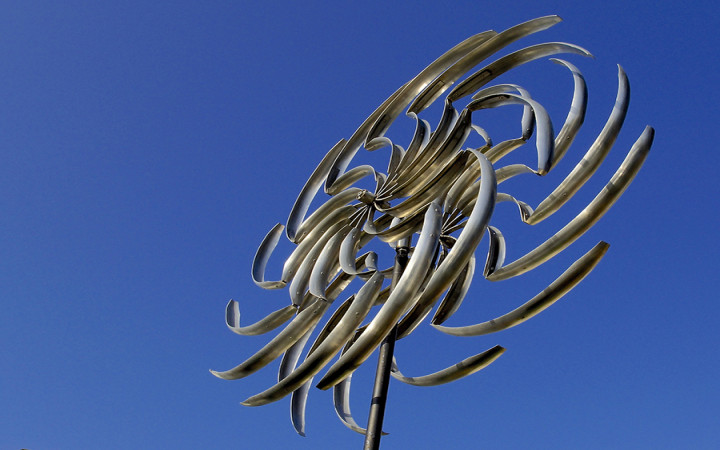Today’s Wonder of the Day was inspired by Jack. Jack Wonders, “What is kinetic energy?” Thanks for WONDERing with us, Jack!
What comes to mind when you think of art? For many kids, a museum full of paintings immediately jumps to mind. Maybe you think of the Mona Lisa or one of the other famous works of Leonardo da Vinci.
Perhaps you think of one of your own priceless works of art that hangs in that most prestigious spot in the house: on the refrigerator door. Many finger paintings have hung in the kitchen until the edges begin to curl and their colors fade.
Others might think of one of the many other types of art, such as music, dance, theater, poetry, or sculpture. Today, we're going to take a closer look at a particular type of art known as kinetic sculpture.
If the word "kinetic" sounds familiar, you may have heard it used in the context of discussing kinetic energy. Kinetic energy is energy of motion. Likewise, kinetic sculpture contains moving parts and/or relies upon motion for its effect.
If you've ever seen a kinetic sculpture, you know how mesmerizing they can be. As the motion of the sculpture repeats or transforms, its overall impression can by almost hypnotic.
Art historians believe the roots of kinetic sculpture lie in the Impressionist paintings of artists like Monet and Degas. These artists were known for trying to express human movement in their works.
The first kinetic sculpture is generally considered to be Marcel Duchamp's 1913 work called Bicycle Wheel. This basic, yet groundbreaking work featured a spinning wheel as its focal point.
Other artists soon advanced the genre. In the 1930s, artist Alexandre Calder began creating mobiles that used mechanisms powered by hand cranks or small motors. Over time, his works changed to rely primarily on air for their movement.
The term "kinetic sculpture" itself can be traced back to an artist named Naum Gabo. An early 20th-century pioneer of the genre, Gabo called his sculptures "kinetic rhythms."
Kinetic sculptures are still made today, but their heyday was in the 1950s and 1960s. One memorable piece was artist Jean Tinguely's Homage to New York, which resembled a machine made of junk that self-destructed over time in the sculpture garden of the Museum of Modern Art.
Kinetic sculptors have incorporated motion into their works in a variety of creative ways. In addition to mobiles powered by air currents, other sculptures have combined art and science to create moving displays featuring water, magnetism, electromechanical devices, and even the participation of spectators.




